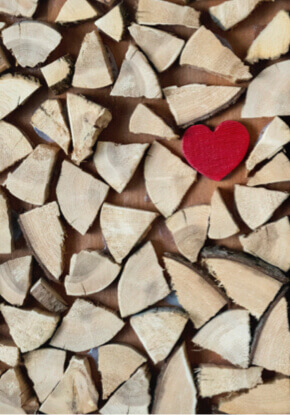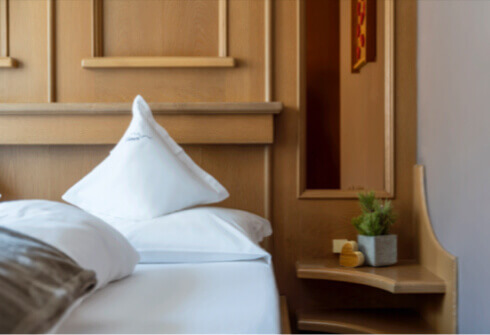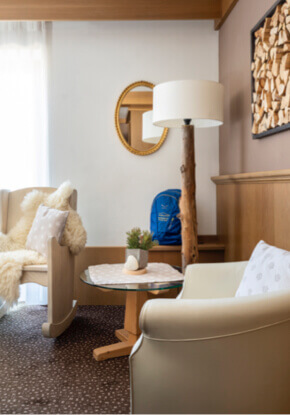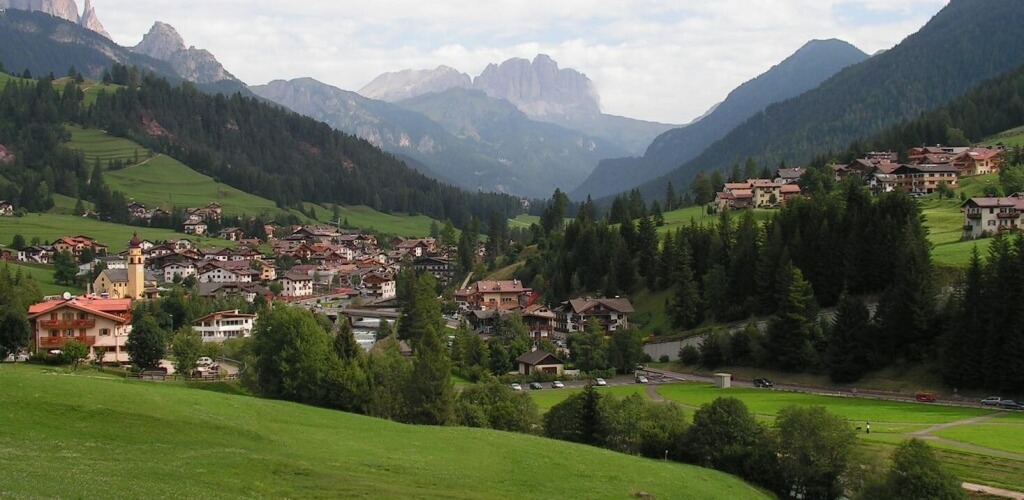Tel: +39 0462 764209
Email: info@hotelcatinaccio.com



Soraga in Val di Fassa
Soraga in Val di Fassa is an ancient settlement surrounded by green meadows and dense woods, bathed by the waters of the Avisio stream that runs alongside the whole town up to the Adige valley.

The name derives from this characteristic, from the Latin terms, and “sora l’èga” means “above the water” and so, it is a clear indication of the privileged position to the river. A small but very welcoming urban center that offers tranquility and relaxation but also delicious excursions, outdoor walks, art, and crafts.
A territory to be discovered: the geography of Soraga di Fassa
Soraga is a municipality divided geographically into two different parts, separated from the municipality of Moena. A portion is located downstream and another completely separate from it. Soraga di Fassa has about 700 inhabitants and together with 16 other municipalities, it forms Ladinia or that geographical area located in the Dolomite valleys around the Sella group and east of Cortina d’Ampezzo. These areas are united by language, or Ladin, which spread with the advent of the Kingdom of Italy. There is no real administrative union, it is mostly a linguistic use of the term. Soraga is one of the oldest towns in the district, made up of the hamlets Palua Sester, Cloch, Festil, Gherghele, and Sala. The area is famous for the seven farms Cioch, Gherghele, Molin, Palùa a, Roisc, Sala, Sester located on the terraces of the Avisio valley which are the original nuclei of the entire perimeter. Just in Soraga, there is also what was once the border between the episcopal principality Bressanone and the episcopal principality of Trento. It is curious to date that 85.5% of the population is made up of native speakers of Ladin and only 14.5% of other languages, including Italian.
Do not miss the church of Soraga: a story worthy of note
Soraga is one of the oldest centers, also famous for the production of wooden furniture, artistic decorations, and productions that depict traditional local themes. Do not miss a visit to the famous church of Soraga, the construction of which was properly decided by the inhabitants who understood the need to have a meeting point for them. The problem related to this construction was where to locate the church, as some citizens wanted it in the center and others instead wanted it in secluded places. The story goes that two oxen were then attached to a cart and left to run free to find out where to build the church. The animals began to wander and stopped on top of this hill, at which point the inhabitants were sure they knew that would be the ideal place to build the church. Still today, in that sacred and mystical place, there is a beautiful church.
Far from mass tourism: peace and relaxation in the Dolomites
The country still maintains all its original beauty and characteristics since it has not been unhinged or invaded by mass tourism. For this reason, it is ideal for all those seeking relaxation and for those who love outdoor activities. In summer, it is quiet, and you can take long walks enjoying the favorable temperature, in winter, you can ski and still rely on local activities. You don’t have to imagine a large town with shops for shopping and clubs on every corner, Soraga’s charm lies in having kept this dimension out of time and space. You will appreciate the possibility of driving without traffic, finding parking easily, being able to chat with the locals always ready to tell anecdotes and funny stories. The location is clean and far from chaos, it seems almost an enchanted fairy tale. Do not miss the track that connects it on foot or by bike downstream. All the transports are there and they work, so it is easy to move around even leaving the car stationary.
Discovering the events that have affected Soraga
From a historical point of view, the Show La Gran Vera which is located in Piazzale Navalge deserves absolute attention. The Ladin name means The Great War and recalls the first world conflict through materials, documents, information, and installations. Everything is obviously told by the inhabitants of the Val di Fassa and from their point of view. It is a truly rich exhibition that shows all the places that Italians and Austrians saw at the front. Many details and very suggestive reconstructions allow you to immerse yourself in that life and understand so much of the history and events of that time. The exhibition is well organized, very interesting also for children. The reconstructions are all faithful, rich in details, you can experience the shots, the cold, and the whole dimension of those events. The ticket costs 5 euros, so it’s very accessible, with just one euro difference, you can also access the guided tour where an expert in the field can explain all the details and the reality of what happened. Set up really well and very engaging, it is one of the most interesting points for all those who wish to discover the culture of the time.
Soraga food and wine tour: local specialties
During your stay in Soraga in Val di Fassa, you have to immerse yourself in the local gastronomic panorama, to better enjoy everything that this precious land has to offer. The locals are very open and, above all, friendly to the patrons. The premises are family-run so you can be pampered not only through the dishes of the Fassa gastronomy but also by the attention of the restaurateurs. Among the unmissable dishes, the dumplings deserve particular attention, famous dumplings of bread with speck, which are prepared either with Moena cheese, with spinach or also in a sweet version with ricotta, apricots, or strawberries. The barley soup is very famous and tasty and is served with ciajoncie ravioli, stuffed with potatoes and dried figs. The tagliolini with porcini mushrooms or the pappardelle with game ragù can spoil you. Among the latter, polenta deserves attention, which is cooked according to tradition and served with melted cheese, sausages, sauerkraut, pork stew. Among the very famous desserts, the fortaes are a sort of fried shell-shaped batter that goes well with jam or the famous apple strudel with vanilla and cream. There are many traditional recipes, the tastes are simple, not elaborate yet so rich in flavor that you are left speechless. The restaurateurs prefer natural and genuine ingredients and take advantage of all traditional dishes such as honey, bread, cold cuts, cheeses. The latter has a long history and are highly appreciated, a nice idea for those who wish to bring a gift, a welcome souvenir. On local tables, you can find Puzzone, the Heart of Fassa, the Fassano, which are all unique specialties but also many types of yogurt, cream, butter. Even the bread is very popular, to try the fennel, potatoes, poppy. Honey is the golden essence that contains all the best of local blooms and for this reason, it is widely exploited. Fir honeydew and rhododendron are traditional to the place and cannot be found elsewhere, a purchase that is worth making in one of the many local shops.
Outdoor days: get lost in the woods and paths
One of the most beautiful and meaningful activities for those who choose to visit Soraga is to appreciate nature and dedicate themselves to excursions and trips out of town. A nice idea is to organize a picnic or rent a bicycle to explore the country. For the more enterprising, certainly of interest, tracking along the paths that allow you to go down to the valley. In addition to the natural routes, many religious or thematic itineraries are also available, there are excursions organized for the little ones and also for families with a stroller. There are also many sports practices and Nordic walking itineraries which are perfect especially in spring and summer.
Soraga in Val di Fassa is a country surrounded by greenery, which will welcome you with its paths, its breathtaking landscapes, the crystal clear waters, and all the authenticity of its land and of those who still live it with extreme care. A perfect place to forget the stress and dynamics of Uotidian life and enjoy days of pure magic.
Sign up for our
newsletter!
